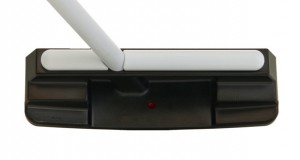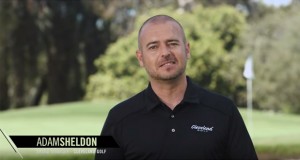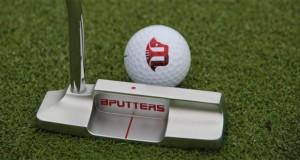 In a rather short period of time, Yes! Golf has emerged as a putter powerhouse, both on tour and at retail. Yes! Golf remains a relatively small company whose tour inroads have been truly earned, not purchased in the form of lucrative player sponsorships. The open secret to the company’s success is its patented C-Groove technology, which was invented by English putting guru Harold Swash. The concentric C-Grooves on Yes! Putters are designed to send the ball on a truer topspin roll for enhanced directional and distance control. Based in
In a rather short period of time, Yes! Golf has emerged as a putter powerhouse, both on tour and at retail. Yes! Golf remains a relatively small company whose tour inroads have been truly earned, not purchased in the form of lucrative player sponsorships. The open secret to the company’s success is its patented C-Groove technology, which was invented by English putting guru Harold Swash. The concentric C-Grooves on Yes! Putters are designed to send the ball on a truer topspin roll for enhanced directional and distance control. Based in
What sets Yes! putters apart from other putters in terms of features and benefits?
Our patented C-Groove face design feature is the difference. This design feature provides a greater margin of error compared to all other putters that we have tested when the ball is impacted less than ideally.
Most putting experts, including most professional golfers, understand that achievement of a “true” rolling motion within a minimal distance after impact is required to afford directional and distance control. The energy created by the strike of a putter face will dissipate at differing rates when balls skid, bounce, back spin or side turn upon impact, even when the player uses an identical stroke. As a result, two or more balls struck with identical strokes will often finish at different locations and distances. On the other hand, balls that achieve true roll within a minimum distance after impact, with identical striking, will finish within much tighter deviations of both direction and distance.
Very few players consistently achieve ideal impact with any putters. We define ideal impact as one wherein the face of the putter is square to the target line at impact and wherein the loft at impact and the plane of the strike at impact are physically correct to produce the desired true roll. The world
In other words, even when the putter face is slightly open or closed to the target line, or the loft or the plane of the strike at impact is less than ideal, the C-Groove design provides compensating factors.
Please describe the relationship between the C-Groove design feature and true roll—in other words, what exactly do the grooves do?
The groove edges are 4/1000th of an inch and only two groove edges contact the ball at impact. The groove edges on impact—assuming the plane of the strike is slightly upward—grip into the surface of the ball and impart an over-the-top rolling force much like grooves on irons and woods impart backspin on a ball.
Under slow-motion video analysis—which we have done thousands of times—the ball is almost always struck with some degree of positive loft, resulting in the ball acting like a chip at the beginning, with the ball up above the surface and turning backwards. Although the ball when impacted with a C-Groove putter can be lofted above the surface for some distance, the groove edges impart an over-the-top rolling force, resulting in a more controlled motion compared to the actions—such as bouncing and skidding—caused by backward turning in the initial distance of a putt.
We have observed that most good putters, including most pros, impact the ball with almost zero loft, thereby eliminating back turn but still having some measure of skid when other putters are used.
Can you tell us a bit more about Harold Swash, the inventor of your C-Groove technology?
Harold Swash, now 74, has been teaching putting primarily in his homeland of England and elsewhere in Europe for nearly 40 years. He also has developed putters, putting training aids and wedges over the years. He also operates the Harold Swash Putting Schools of Excellence, which now has several locations in the U.K. and Europe. He has been known as the “European Putting Doctor” for many years. His putting students have included many tour players including Padraig Harrington, David Howell, Henrik Stenson and, in times gone by, Seve Ballesteros, Sandy Lyle and Ian Woosnam.
Where does Yes! stand at the moment in terms of growth on tour and at retail?
Our putter counts by tour over the past 18 months are either number one or number two on the LPGA Tour; number two, three or four per event on the European Tour; number one on the Korean PGA and LPGA tours; number one on the Duramed Futures Tour; top five on the Japan PGA and LPGA tours; and generally number four or five on the PGA and Nationwide Tours, after the leading brands Titleist/Cameron, Ping and Callaway/Odyssey.
At the retail level, our sales have grown tenfold since 2004. In the United States, our market share is close to number five. In the United Kingdom, our market share is number three. In Korea, it’s number one.
Your putter model names, such as Callie, Sophia and Olivia, are very distinctive. Can you tell us more about these names and what they signify?
We adopted the policy of using feminine names upon Retief Goosen
What are your latest models—and what can we expect next from Yes! Golf?
We just released our first two forged models and plan on additional forged models. Our first forged putter is the Callie-F model, and we just released a forged Abbie model. Also, we will be releasing some new models over the next few months incorporating unique alignment concepts. We are also planning to partner with a maker of products used for the custom fitting of putters, as well as for putting instruction and training.
Can you tell us a bit more about your upcoming models and their alignment concepts?
Without letting the cat out of the bag, I can only tell you that the unique alignment features are based on the human eye-brain functions.
Thank you, Mr. Ricci! For more information, visit the Yes! Golf web site.
 PutterZone – Best Putter Reviews
PutterZone – Best Putter Reviews




That C-Groove technology looks pretty amazing, I think it-s a revolution of the way of playing golf because it allows you to calculate the distance and direction of the ball in a better way.